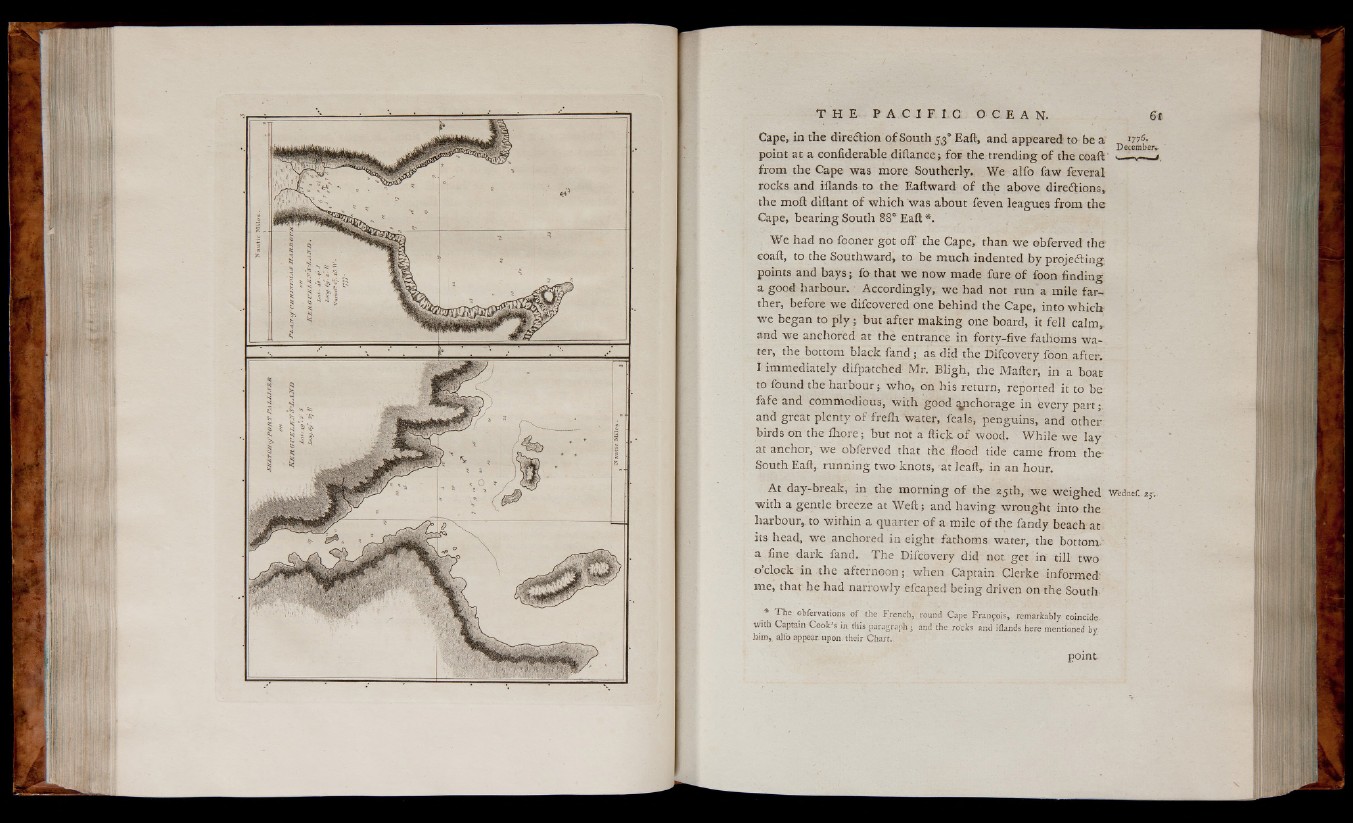
Cape, in the direction o f South 53° Eaft, and appeared to be a '776.
point at a confiderable diftance; for the trending of the coaft'
from the Cape was more Southerly. We alfo faw feveral
rocks and iflands to the Eaftward of the above directions,
the m o i diftant of which was about feven leagues from the
Cape, bearing South 88° Eaft *.
We had no fooner got off the Cape, than we obferved the
coaft, to the Southward, to be much indented by projecting
points and bays ; fo that we now made fure of foon finding
a good harbour. Accordingly, we had not run a mile farther,
before we difcovered one behind the Cape, into which
we began to ply ; but after making one board, it fell calm,
and we anchored at the entrance in forty-five fathoms water,
the bottom black fand ; as did the Difcovery foon after.
I immediately difpatched Mr. Bligh, the Mafter, in a boat
to found the harbour ; who, on his return, reported it to be
fafe and commodious, with good tyichorage in every part ;
anâ great plenty of freih water, feals, penguins, and other
birds on the ihore ; but not a flick of wood. While we lay
at anchor, we obferved that the flood tide came from the
South Eaft, running two knots, at leaft, in an hour.
At day-break, in the morning of the 25th, we weighed wtdnef. 25.
with a gentle breeze at Weft ; and having wrought into the
harbour, to within a quarter o f a mile of the fandy beach at
its head, we anchored in eight fathoms water, the bottom,
a fine dark fand. The Difcovery did not get in till two
o’clock in the afternoon; when Captain Clerke informed:
me, that he had narrowly efcaped being driven on the South.
* The obfervations o f the French, round Çape François, remarkably coincide,
with Captain Cook’s in this paragraph ; and the rocks and iflands here mentioned by.
him,, alfo appear, upon, their Chart..
point